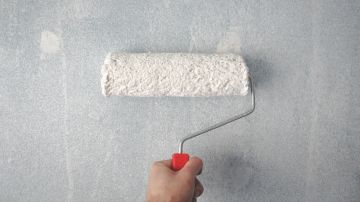Spring is here, and many of us are in the midst of lightening and brightening our homes ready for the new season. If you’re planning a paint job at home, it’s wise to bear these handy hints in mind to achieve that flawless finish. Painting should be relatively simple, but it’s important to get it right if you want to paint like a pro.
Preparing the walls
Like many things in life, preparation is key when it comes to painting your home. You need to make sure the surface is ready before you start. If you’re covering a wall, which has been decorated with frames or prints, you may need to fill in holes that have been left behind by screws or nails. To do this, you can buy filler from a hardware store, and follow the instructions. Make sure you don’t apply too much product, as it will ooze out of the gaps. Let the filler dry before you sand the walls. It’s essential to sand the surface to make sure that it’s even. Once you’ve done this, take a cloth and using warm, soapy water, wipe the walls down. This will ensure you don’t have any dirt or dust mixed in with your paint. In some cases, it’s advisable to use primer before you apply the first coat of paint.
Choosing your paint
When you’re choosing paint, you don’t just need to think about the color. You also need to consider what kind of paint you want. The environment and the finish you want will dictate the type of product you choose. You may need a different type for a bathroom than you would for a bedroom, for example, and some people prefer matt to gloss. If you’re not sure which type of paint would be best for your project, ask for assistance. Generally speaking, if you’re painting internal walls, satin is usually a good option. This will give you a hint of shine without the brilliance of pure gloss.
Which tools should I use?
They say a bad workman blames his tools, so to avoid any issues further down the line, it’s essential to select the right equipment for the job. If you’re painting large surfaces, go for a roller or even an airless sprayer. If you’re tackling a small area or you’re doing the intricate areas, such as the spaces around window frames or sockets, use a brush. It’s always a good idea to use tape to protect woodwork and prevent blurring when you’re using a different color for the walls and the ceiling.
How many coats?
The number of coats you need will depend on the color you’re using, the shade you’re covering and whether or not you used primer. If you’re putting a dark color over a light shade, you may only need two coats. If you’re going from dark to light, you may need three or even four. Make sure you let each coat dry before you start the next layer.
If you’re keen to embrace the spring/summer vibes at home and you’re planning to paint, follow these steps, and you can’t go wrong!
Lot's of love
















